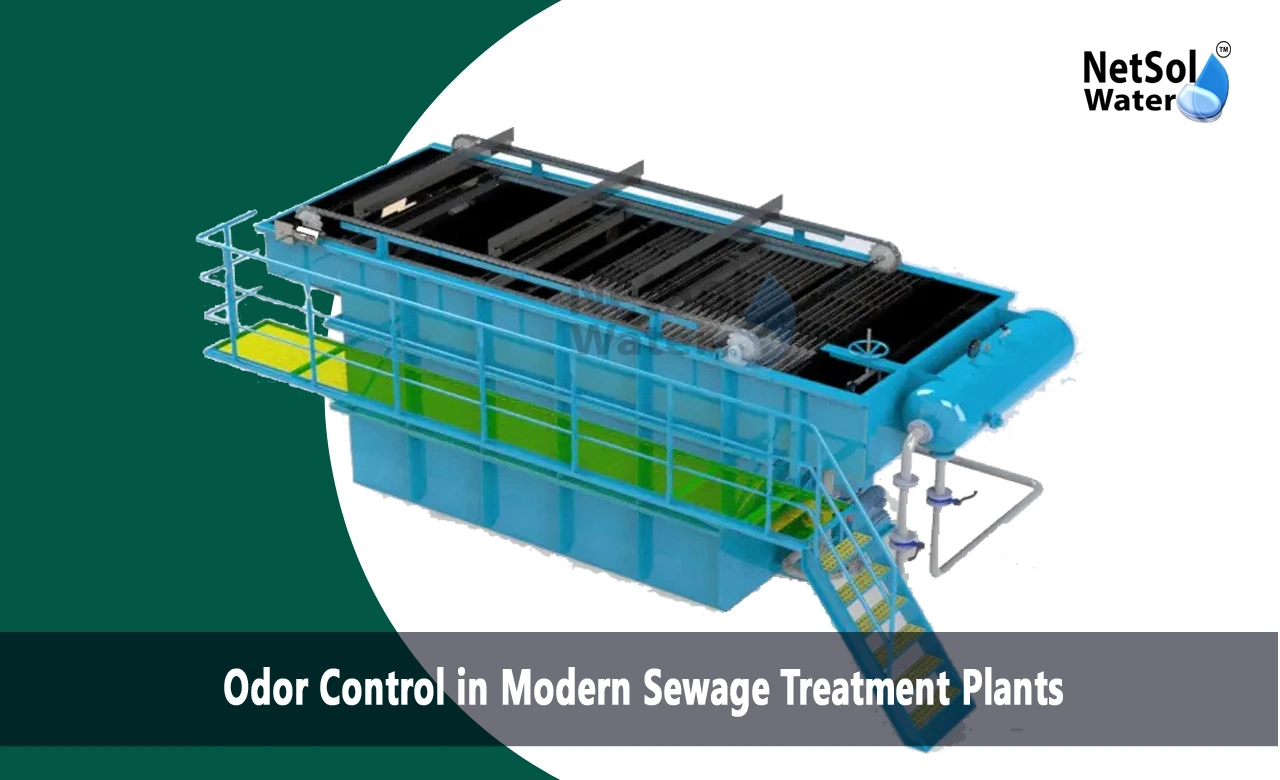How to Control Odor in Modern Sewage Treatment Plants?
Engineers and scientists have explored several techniques to solve the odour problem over the years. Modern sewage treatment plants today use a range of odour control methods and strategies. These attempt to minimize irritating scents and improve life quality for nearby areas.
We'll study the causes of odours in sewage treatment, the numerous ways used to manage them, and some of the recent advancements in this subject.
Sources of Odours in Sewage Treatment
Hydrogen Sulfide
Hydrogen sulfide (H2S) gives the typical "rotten egg" scent. Bacteria make it when they break down organic matter without oxygen. In sewage treatment, this commonly happens in places with low flow or stagnant conditions.
H2S isn't simply unpleasant - it can be hazardous in excessive doses. It corrodes metals and concrete and can pose health dangers to workers and adjacent communities. That's why controlling H2S takes top importance in odour management.
Ammonia
Another typical odour sourceammonia (NH3) develops when urea and other nitrogen-containing compounds in wastewater break down. While less objectionable than H2S, ammonia nevertheless contributes to the overall odour profile of a treatment plant.
Volatile Organic Compounds (VOCs)
Sewage can contain a wide spectrum of VOCs, depending on the types of waste entering the system. These include:
· Mercaptans: sulfur-containing molecules having a pungent garlic-like odour
· Amines: nitrogen-containing chemicals having a fishy smell
· Skatole and indole: chemicals that give excrement its unique odour
Odour Control Strategies
1. Prevention and Source Control
The best strategy to deal with scents is to prevent them from arising in the first place. This involves:
. Proper System Design
. Minimize areas of low flow or stagnation
. Ensure enough ventilation in enclosed spaces
. Use corrosion-resistant materials to reduce biofilm buildup
Chemical Addition
Adding chemicals to the wastewater can help avoid odour formation:
· pH adjustment: Keep the pH above 8.0 to decrease H2S production
· Iron salts: These bind with sulfides, making them less likely to generate H2S gas
· Nitrate compounds: These provide an alternative oxygen source for bacteria, lowering sulfide generation
Good Housekeeping Practices
Regular cleaning and repair of equipment and facilities can go a long way in preventing odour development.
2. Containment and Collection
When scents do form, the following stage entails controlling and collecting them before they escape into the surrounding region. This often happens through:
Covers and Enclosures
Covering odour-producing locations like headworks, main clarifiers and sludge processing facilities can dramatically reduce odour emissions. These range from simple floating covers to fully enclosed constructions.
Ventilation Systems
Powerful fans and ducting gather odorous air from enclosed locations. This air then goes to treatment systems before release.
3. Treatment Technologies
Once odorous air is collected it needs treatment before release. Several ways are available:
Biological Treatment
This technique uses microorganisms to break down odorous chemicals. The two primary types are:
Biofilters
These consist of a bed of organic material (like compost or wood chips) that houses odor-eating microorganisms. As air travels through the bed the bacteria convert stinky molecules into harmless ones. Biofilters work wonderfully for treating vast volumes of air with relatively low odour concentrations.
Biotrickling Filters
Similar to biofilters but with a continual flow of water across the filter medium. This enables greater management of moisture and nutritional levels making them more effective for higher odour concentrations.
Chemical Scrubbers
These systems use chemical reactions to eliminate odorous chemicals from the air. Common types include:
· Acid scrubbers: Effective for eliminating ammonia and other basic chemicals
· Caustic scrubbers: Good for H2S and other acidic gasses
· Oxidizing scrubbers: Use chemicals like chlorine or hydrogen peroxide to break down a wide range of odorous molecules
Activated Carbon Adsorption
Activated carbon captures odour molecules on its surface. It's particularly good for reducing VOCs and can act as a final polishing step following other treatment methods.
Thermal Oxidation
This procedure uses high temperatures to burn off odorous chemicals. While effectiveit's energy-intensive and normally reserved for situations with very high odour concentrations.
4. Masking and Neutralization
Sometimes employed as a supplementary measure these strategies involve:
Odour Masking Agents
These overcome disagreeable smells. While they don't actually eradicate odours they can provide temporary respite in emergency situations.
Odour Neutralizers
These products promise to chemically react with odour molecules, rendering them odourless. Their efficiency is contested, and they're normally not depended upon as a key odour control approach.
Innovations in Odour Control
The field of odour control constantly evolves. Here are several fascinating developments to watch:
Advanced Monitoring and Modelling
New sensor technology and computer models enable treatment facilities better analyze and forecast odour generation. This enables more proactive and focused management actions.
Photocatalytic Oxidation
This new technology uses light-activated catalysts to break down odorous molecules. It shows potential for treating low amounts of VOCs.
Plasma Technology
Non-thermal plasma systems can generate highly reactive species that rapidly oxidize odorous substances. This technique is currently in the experimental stage but could offer a low-energy alternative to standard thermal oxidation.
Green Odor Control
There's rising interest in more sustainable odour control technologies. This includes:
· Plant-based biofilters using specialised odour-absorbing plants
· Enzymatic therapies that break down odorous chemicals
· Use of recycled materials in filter media
Conclusion
Odour management in modern sewage treatment plants involves chemistry, biology, engineering and even a little psychology. As our cities grow and wastewater treatment becomes increasingly critical proper odour management will play a crucial part in sustaining livable neighbourhoods.
To explore customised commercial RO plants, Industrial RO plants, ETP or STP solutions for your needs in your areas and nearby regions, contact Netsol Water at:
Phone: +91-965-060-8473, Email: enquiry@netsolwater.com



